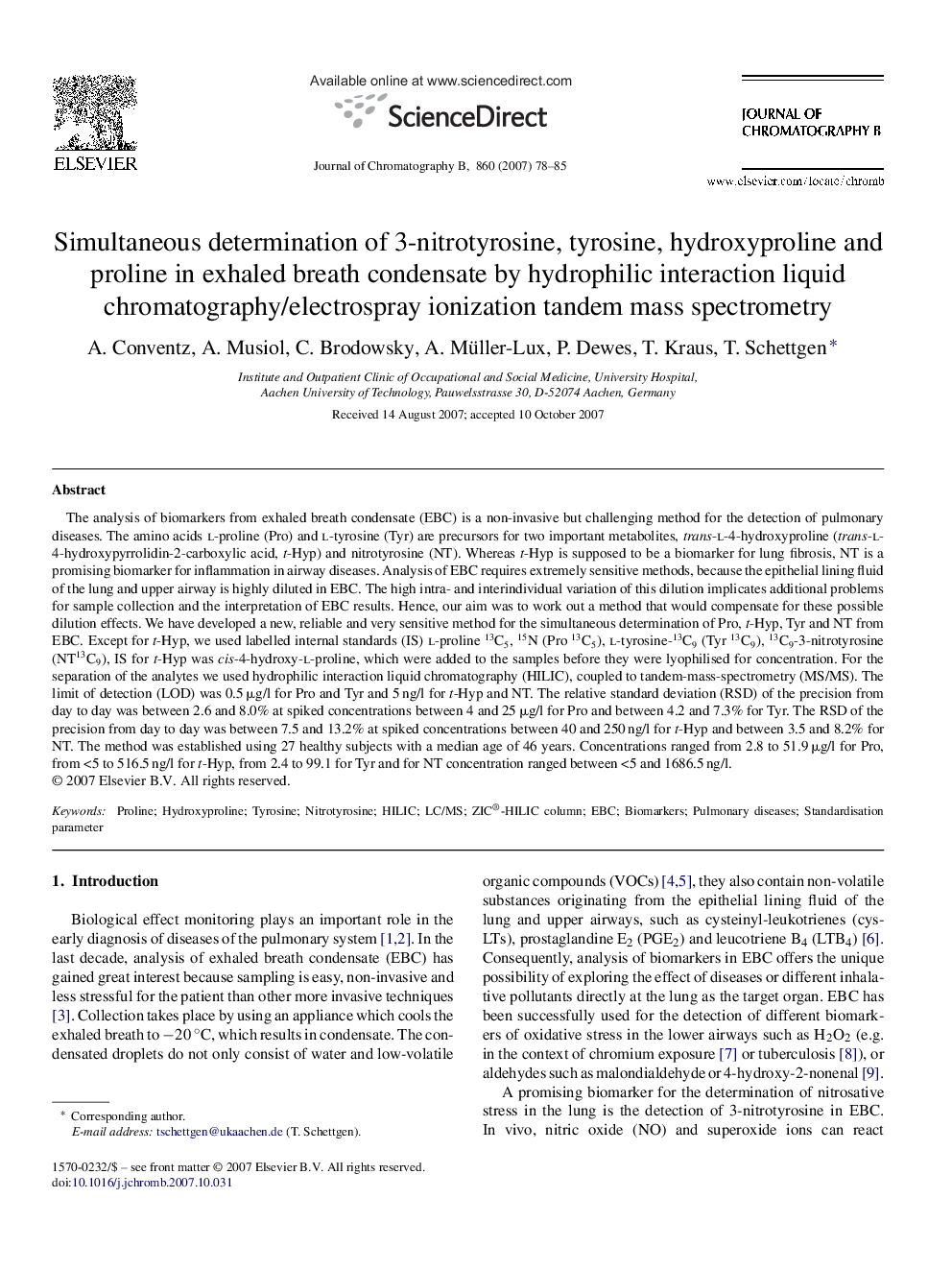| Article ID | Journal | Published Year | Pages | File Type |
|---|---|---|---|---|
| 1215863 | Journal of Chromatography B | 2007 | 8 Pages |
The analysis of biomarkers from exhaled breath condensate (EBC) is a non-invasive but challenging method for the detection of pulmonary diseases. The amino acids l-proline (Pro) and l-tyrosine (Tyr) are precursors for two important metabolites, trans-l-4-hydroxyproline (trans-l-4-hydroxypyrrolidin-2-carboxylic acid, t-Hyp) and nitrotyrosine (NT). Whereas t-Hyp is supposed to be a biomarker for lung fibrosis, NT is a promising biomarker for inflammation in airway diseases. Analysis of EBC requires extremely sensitive methods, because the epithelial lining fluid of the lung and upper airway is highly diluted in EBC. The high intra- and interindividual variation of this dilution implicates additional problems for sample collection and the interpretation of EBC results. Hence, our aim was to work out a method that would compensate for these possible dilution effects. We have developed a new, reliable and very sensitive method for the simultaneous determination of Pro, t-Hyp, Tyr and NT from EBC. Except for t-Hyp, we used labelled internal standards (IS) l-proline 13C5, 15N (Pro 13C5), l-tyrosine-13C9 (Tyr 13C9), 13C9-3-nitrotyrosine (NT13C9), IS for t-Hyp was cis-4-hydroxy-l-proline, which were added to the samples before they were lyophilised for concentration. For the separation of the analytes we used hydrophilic interaction liquid chromatography (HILIC), coupled to tandem-mass-spectrometry (MS/MS). The limit of detection (LOD) was 0.5 μg/l for Pro and Tyr and 5 ng/l for t-Hyp and NT. The relative standard deviation (RSD) of the precision from day to day was between 2.6 and 8.0% at spiked concentrations between 4 and 25 μg/l for Pro and between 4.2 and 7.3% for Tyr. The RSD of the precision from day to day was between 7.5 and 13.2% at spiked concentrations between 40 and 250 ng/l for t-Hyp and between 3.5 and 8.2% for NT. The method was established using 27 healthy subjects with a median age of 46 years. Concentrations ranged from 2.8 to 51.9 μg/l for Pro, from <5 to 516.5 ng/l for t-Hyp, from 2.4 to 99.1 for Tyr and for NT concentration ranged between <5 and 1686.5 ng/l.
